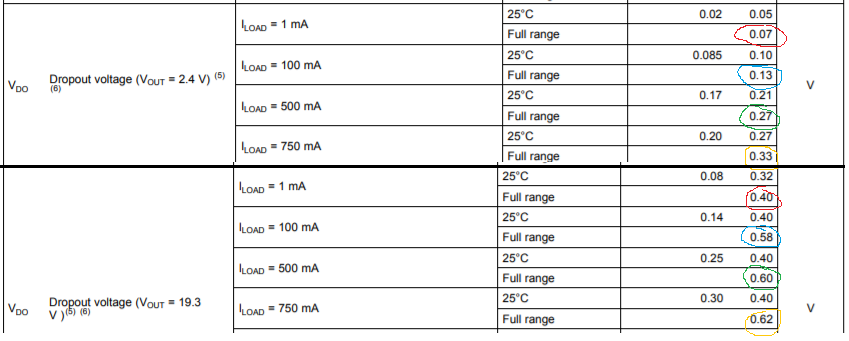Hello,
I have a few questions regarding the spec table of this device. Particularly the ADJ pin bias current and the drop out voltage. We noticed that the typical values for ADJ current on page 8 are very different from 25C spec to the full range spec (3uA vs 5.5uA). Also, both these numbers are different than Figure 13 on page 11. Lastly, the difference in drop out voltage between the high and low current parts seemly strangely large. At 1mA and full temp range, the low current part has max 70mV while the low current part has max 400mV.
- How is the typical ADJ current measured/defined different when spec-ing the full range number vs the 25C number that results in almost a 2x difference in the numbers?
- Is Figure 13 accurate? What conditions is it measured under that could make it so very different from the characteristics table?
- Do the two different current variant parts use the same die?
- Why are the dropouts for the .75A version so much better?
Thank you!
Regards,
Ryan B.


